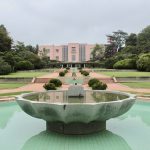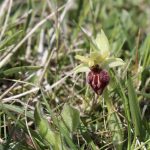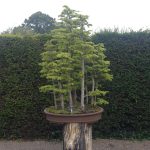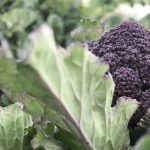I love fungi, looking for them in autumn is one of the things I look forward to most all year. You don’t even need to identify them to enjoy looking at them, in their wonderful colours and shapes.
One thing I’ve noticed over the years is that people often say “it’s OK to pick fungi because they’re just like apples.” This is in reference to the fact the visible mushroom is the spore producing part of a larger organism. Picking the visible body in most cases doesn’t kill the actual fungus, which lives in the ground, in or on rotting wood and leaf debris, or attached to living plants.
However, this comparison to apples I’ve seen lead to people sharing photos of huge hauls of fungi, more than a single household needs, often of non-edible fungi, and often of quite rare fungi. Last year, I saw one person post a huge selection of important CHEGD fungi in a group as a work of art, and must have cleared a significant proportion found in a grassland area to do so. They’d included a number of internationally rare fungi and defended themselves by saying fungi are like apples.
The comparison of fungi to apples – though I do get the intention – has always struck me as an unfair and misleading one that is leading to over harvesting. My main reasoning is:
- Apples are almost always cultivated, they are grown for humans to pick.
- Wild fungi are not.
- Apples are easy to plant and grow.
- Wild fungi aren’t generally easy to plant and grow making them more precious.
- Apples evolved as a fruit to entice animals to eat them to help spread the inner seeds.
- Fungi are largely spore producing, usually airborne, spread by the wind. Removing this part and bringing inside or eating reduces its volume of spores released into the wild.
- Apple trees produce hundreds of fruit containing a small number of seeds that in the right conditions can grow easily (note: most cultivated apples are grown from grafts not seeds).
- Fungi can often produce one to a few mushrooms producing their spores, once removed may be their only chance that year to reproduce (not all of course, some fungi grow in dense patches).
- Fungi are often uncommon – there may be only one of that particular fungus within an acre or more.
- Fungi often need very particular conditions and habitats to grow – producing thousands of spores may be necessary because they can often be so unlikely to land in the right conditions. Remove one and that significantly reduces its chances.
- Fungi can take a long time to grow to spore producing age.
- Evidently, given just how many spores fungi produce but how few off-spring that leads to in most instances, appreciating each body we pick will have a material impact.
I’m not saying we shouldn’t pick wild fungi of course, and obviously there are many fungi that are prolific locally and nationally. I’m just sharing a concern that with more people becoming interested in fungi (which is a great thing!) as part of studying nature and foraging, perhaps we need a new and more careful approach to how we encourage people to treat them.
For instance, field guides all recommend picking fungi to take home for ID. Is that still the best advice in today’s world with a significantly larger number of people doing so in a world where all wildlife is reducing? Especially when we have new technology to help identify many fungi without picking them.
Perhaps our advice needs to be updated to recommend people first try photo ID before eventually picking if they really have to, and emphasising that when foraging, making sure to only pick edible fungi that are known to be abundant in the area. Also re-emphasising to never take all of the spore producing bodies, to always leave a good number to continue the cycle for future generations.
I thought I’d share this concern for discussion, please do let me know what you think in the comments below.



